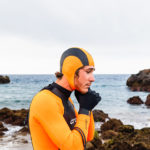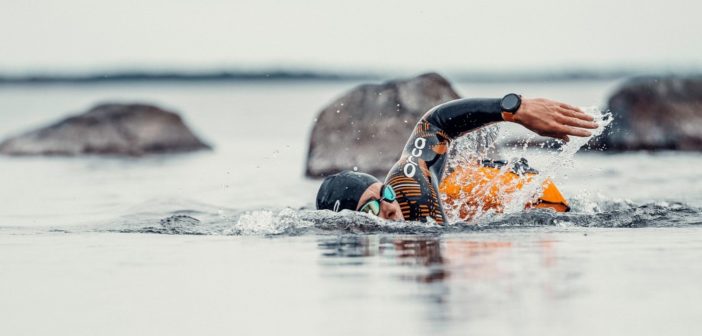After weeks of research and multiple trips to your local wetsuit retailer, you have finally decided what model of wetsuit to go with, but apart from the wetsuit is there anything else you need before you hit the water.
Our wetsuit guide can be found HERE

First up is a safety buoy. Usually strapped to your waist and towed behind you, its main purpose is to keep you visible in the water, to lifeguards, boats and people standing on the shoreline. Some of buoys have additional features including a hydration bladder, a watertight compartment or drybag.
Our range of safety buoys can be found HERE
Next up on your list is a pair of swimming goggles. Goggles serve two main purposes, first, they protect your eyes, and second help improve visibility. Goggles protect your eyes by preventing irritation caused by chlorine in the swimming pool or salt water when out open water swimming. A good pair of goggles will provide a watertight seal around your eyes, reducing the amount of water that can enter your eyes. Improved vision underwater will improve your confidence allowing you to increase your speed whilst maintaining good spatial awareness. When it comes to choosing your goggles there are plenty of options out there. You have different options when it comes to lens sizes, nose clips etc etc. When it comes to lenses, you can choose from polarised, mirrored, or low light. The type of lens you use, depends on several factors, the weather, indoor or outdoor swimming, and the level of lighting.
A breakdown of the different lenses comes courtesy of proswimwear.co.uk
| Colour | Outcome |
| Mirrored | Primarily designed for outdoor use, it helps reduce brightness and glare. A mirror coating can be added to any lens colour. Sometimes competitors even feel they have a psychological advantage in racing with mirrored lenses. |
| Smoke | These lenses serve many purposes. They are powerful with reductive light qualities so that the overall brightness you see is lessened without too much colour distortion. Great for outside swimming in sunny conditions |
| Clear | Most suitable for indoor use and low-light situations. It offers protection and clear vision without changing the colours of surroundings |
| Blue | Suitable for indoor and outdoor use, lighter blues best for indoors and darker outdoors. It reduces surface glare from water and provides great visibility |
| Purple | Lighter purples like lilac are good for indoors, and darker purples are better for outdoors. They provide the best contrasts for objects against a green or blue background |
| Aqua/Green | These lenses minimise colour distortion in low light and perfect for indoor swimming. |
| Amber | They are brilliant for people who struggle to see the bottom of the pool, as they filter light to give you a clearer image. Good for indoor and outdoor use. |
| Red | They are good at enhancing contrast but work well in medium and low light conditions |
So, what do you put on top of your head. When it comes to swimming caps, you have two options. The old school cloth cap or the more modern rubber/silicone version.
The rubber/silicone caps big advantage is the fact they are more hydrodynamic. In other words, they are better going through the water then cloth. This is down to the fact they are designed to be wrinkle free which gives them a smooth surface going through the water producing less drag. They are also more durable and stronger than other materials. The only downside to this style of cap is it can be tricky to put on.
Other options include volume caps for people with a lot of hair that needs covering. Visibility caps. Are aimed more at the open water swimmer and the bright colour it is made from allows the swimmer to be more visible. These caps come with or without a chin strap and come in a thermal version.

You’ve got your wetsuit; safety buoy and goggles are there anything else you need. Next up is ear plugs and nose clips. Ear plugs prevents water getting into your ears which in some cases can lead to ear infections, commonly known as swimmer’s ear. Some ear plugs are made from silicone, meaning the plug can be shaped to fit your ear. You may not know the quality of the water you are swimming in, so it’s always better to play it safe. Like the ear plug, the nose clip is deigned to prevent water entering your nose meaning you concentrate on breathing solely through your mouth and helps prevent allergic reaction to the water. This could come in the form of a sinus infection
Our range of swimming accessories including goggles and swim caps can be found HERE




